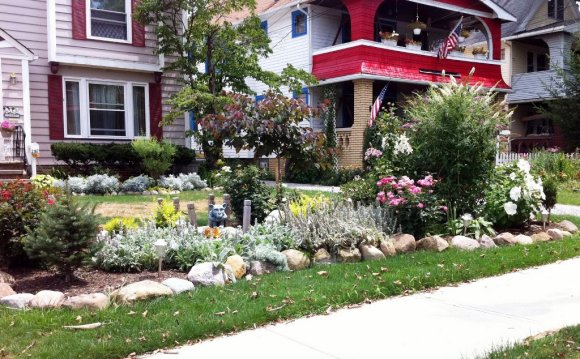
Of course, before you get carried away with planting, you have to take care of a couple of practical matters. And the first of those is to clearly identify the front door, so that when guests arrive, they know exactly where to go.
When I visited Dublin, Ireland, I marveled at how homeowners distinguished their row houses by painting the front door a favorite color. You can do this, too. In addition, there are a number of other ways you can give your place personality: by building an arbor over your entrance, by grouping several eye-catching containers on either side of your door, by installing a sculpture or wall fountain in an entry courtyard, or by growing a vine up and over your doorway. You can even install special landscape lighting (beyond the standard porch lights and lampposts) to highlight your entry at night.
To reach the doorway, you need a good path. Build one that’s wide enough for two people to walk abreast. It should also be safe—that is, with an even, nonslip surface that won’t cause anyone to stumble or fall.
Poured concrete is the most commonly used path material because of its low cost. However, other materials like brick, stone, and concrete pavers make a stronger first impression and are often more appropriate in a garden setting. Even concrete that has been stained or texturized is much more interesting than plain concrete, and is still very affordable. Or spruce up existing concrete paths by edging them with bricks or cobblestones. Select materials that match the style, materials, or colors of your house. This will better integrate your house and landscape.
Most front-yard paths are straight because they are the easiest for contractors to build and the quickest route to the front door. Curved or jogged paths are often more interesting, especially when they wind their way through a garden, toward a birdbath, or alongside a bench. Most front paths lead either to the street or to the driveway, usually to the place where most people park. In many cases, however, two paths make more sense, even if one is little more than a stepping-stone path that runs alongside the driveway to the street.















